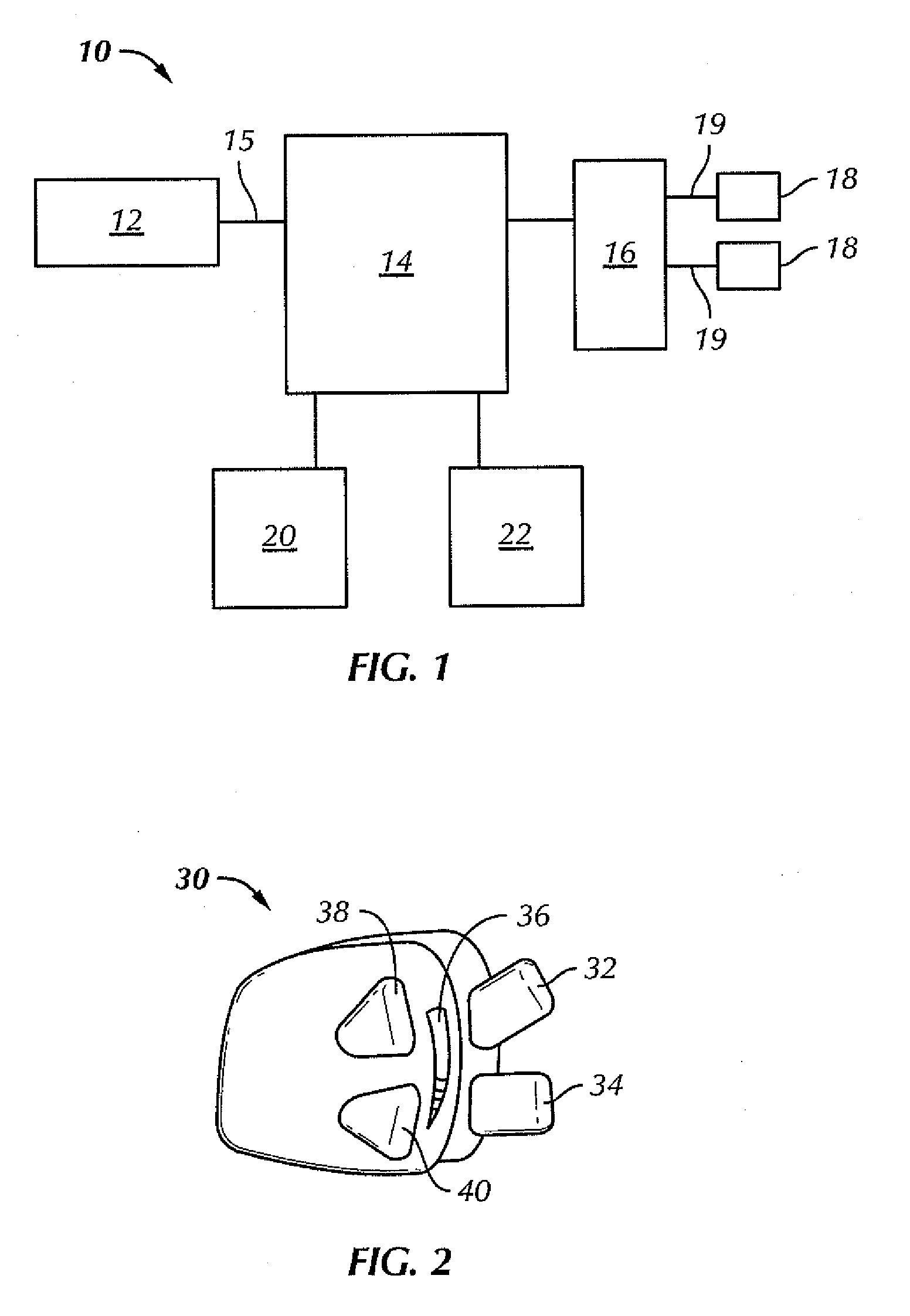Vehicle control
a technology for vehicles and control devices, applied in the field of vehicle control, can solve problems such as inability to provide driver feedback, inability to meet driver demand, and various limitations in the applicability of the applicability,
- Summary
- Abstract
- Description
- Claims
- Application Information
AI Technical Summary
Benefits of technology
Problems solved by technology
Method used
Image
Examples
Embodiment Construction
[0019] In overview the present invention provides a vehicle control system in which driver inputs such as steering wheel and accelerator pedal to the supervisor are effectively de-coupled to assess true driver demand for example in instances where the inputs are potentially conflicting. From this, vehicle output parameters can be derived such as the required vehicle slip or yaw rate.
[0020] The supervisor then controls vehicle sub-systems according to known techniques and provides appropriate set points to each sub-system such that the desired vehicle output parameters are achieved. As a result the system interprets and meets the driver demand providing for example a power oversteer capability.
[0021] The system is enhanced by using external information for example the use of global positioning system (GPS) to assess vehicle slip in conjunction with measurements of yaw rate and acceleration and electronic compasses as multiple inputs to Kalman filters. The system also provides intel...
PUM
 Login to View More
Login to View More Abstract
Description
Claims
Application Information
 Login to View More
Login to View More - R&D
- Intellectual Property
- Life Sciences
- Materials
- Tech Scout
- Unparalleled Data Quality
- Higher Quality Content
- 60% Fewer Hallucinations
Browse by: Latest US Patents, China's latest patents, Technical Efficacy Thesaurus, Application Domain, Technology Topic, Popular Technical Reports.
© 2025 PatSnap. All rights reserved.Legal|Privacy policy|Modern Slavery Act Transparency Statement|Sitemap|About US| Contact US: help@patsnap.com



